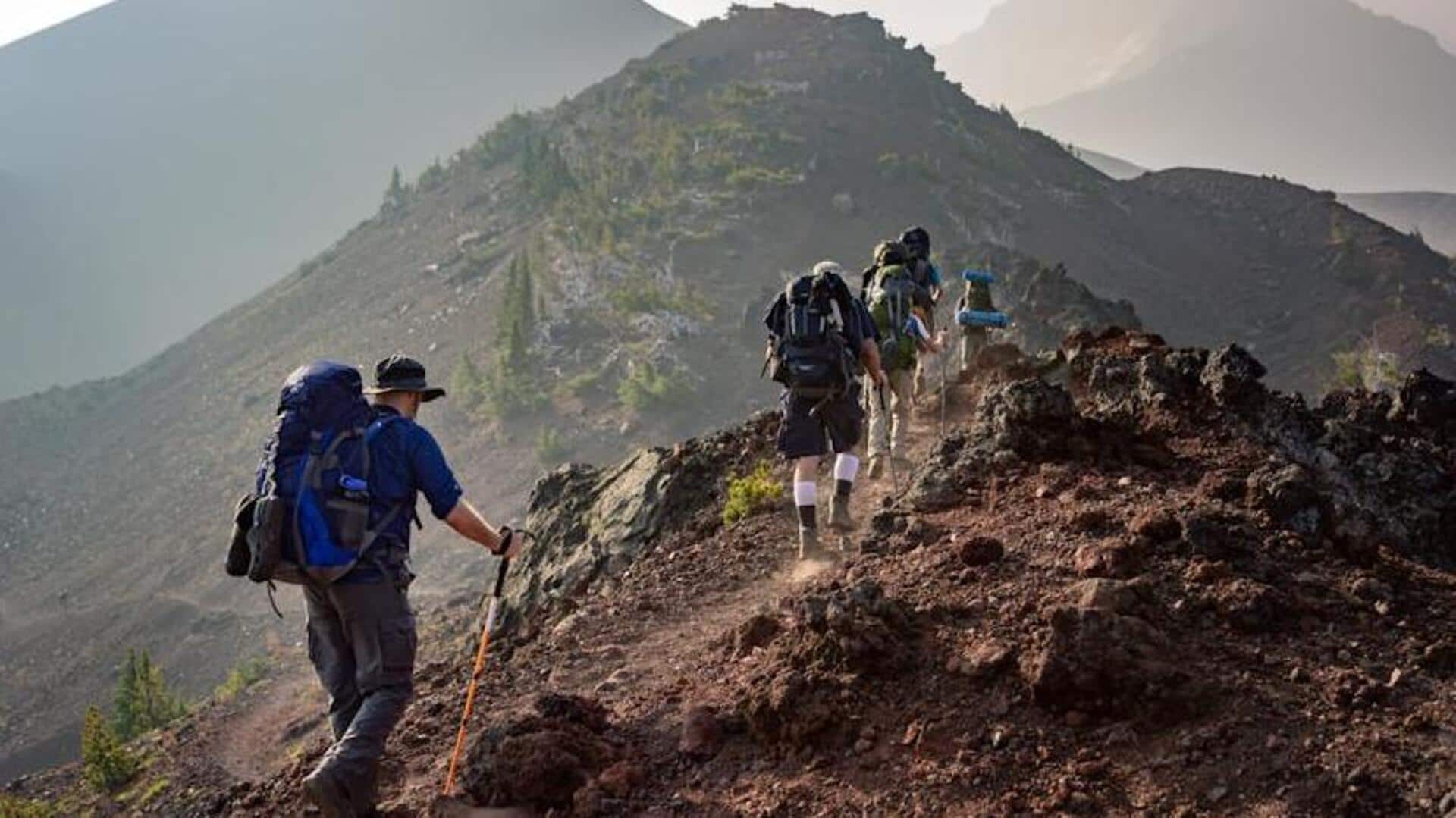Monsoon forest trekking: Tips to prepare
What's the story
The monsoon season adds a whole new layer of beauty to forest trekking. It turns landscapes into thriving, green ecosystems full of life.
This article covers everything you need to know about monsoon forest trekking.
You will learn how to prepare for and enjoy these adventures responsibly and safely.
From choosing the right gear to appreciating the delicate balance of these environments, discover what makes monsoon trekking so special.
Gear up
Choosing the right gear
Choosing the right gear is crucial for monsoon treks.
Essential items include waterproof backpacks, non-slip hiking shoes, and quick-dry clothing.
Investing in good quality rain gear is a must. A lightweight yet sturdy raincoat can make all the difference in comfort and safety.
Don't forget waterproof cases for your electronic devices and cameras. This will save them from getting damaged by moisture.
Trail selection
Understanding monsoon trails
All trails are not made equal when it comes to monsoon trekking. Picking trails with a reputation for being navigable and safe during the rains is key.
Some paths can turn slippery or get overgrown with vegetation during the monsoon, making them hazardous for trekkers.
Doing your research and choosing trails that provide both safety and natural beauty is the secret to a memorable experience.
Eco-conscious trekking
Respecting local ecology
Monsoons are vital for forest ecosystems, but they also make them vulnerable.
Trekkers can help by following a few simple guidelines: stick to the trails, don't litter, and avoid disturbing the animals.
Even better, switch to biodegradable products and carry all your trash back with you.
These small steps can make a big difference, preserving these fragile environments for future adventurers and helping to keep our planet in balance.
Stay safe
Safety measures and emergency preparedness
When it comes to trekking, safety should always be your number one priority, especially during the monsoons when the risks of slips, falls, and even flash floods are significantly higher.
Make a habit of checking weather forecasts regularly before heading out and equip yourself with essential emergency gear.
This includes first aid kits, flashlights with extra batteries, and emergency food supplies like energy bars.
Cultural insights
Engaging with local communities
Numerous forest regions are either neighboring or home to indigenous communities with vibrant cultural heritages deeply rooted in nature.
Interacting respectfully with these communities can significantly enhance your trekking experience.
Understanding their traditions, agricultural practices, and efforts toward conservation can offer profound insights into the intricate interplay between human life and forest ecosystems during the monsoons.
